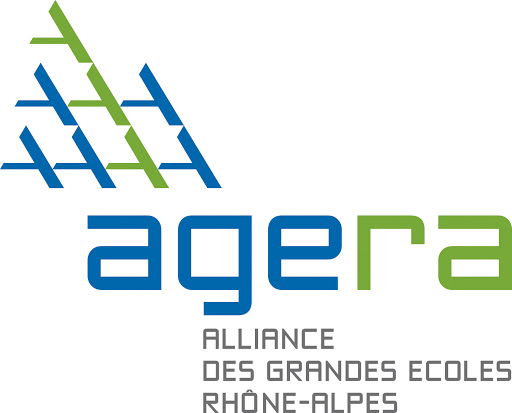- Homepage
- ESDES’s blog
- Research
- Considering Climate Catastrophes with Günther Anders
Patrick Gilormini
8 min.
4 November 2022
Devastating floods in Pakistan, unprecedented droughts and heat waves in China and Europe, torrential rains and raging forest fires in the United States: over the summer of 2022 natural catastrophes throughout the world have highlighted the real and horrifying impacts of climate change for billions of people. Technical solutions to global warming are already proving unequal to the challenge: the heat wave in California forced the State to issue a partial ban on charging electric vehicles, whose widespread use they were simultaneously attempting to encourage.[1] High temperatures had affected the grid to such an extent that it was threatening to fail. Similar power cuts occurred in Lyon in France as repeated heat waves caused failures in the electricity grid, which primarily runs underground in the densely populated urban area.[2] Similarly, Airbus has announced that new hydrogen airplanes will be operational by 2035,[3] however, the use of ‘green’ hydrogen for air transportation will require enormous amounts of electricity.
Our current world is heavily reliant on technologies with secondary effects that tend to marginalize or destroy humankind, so how can this world create a space for the operation of environmentally responsible companies? The philosopher Günther Anders provided a great deal of food for thought, and his ideas challenged technological solutions to global warming.
The obsolescence of man
Günther Anders[4] (1902-1992) was a German philosopher and a follower of Husserl and Heidegger. He reflected on and criticized the autonomy of technology. He believed that modern technology was gradually whittling away the freedoms of humankind; first and foremost, by making human beings obsolete while simultaneously fostering a long-term plan to eliminate them. Rather than merely seeing human beings as resources, Modern technology treats them as raw material. The only freedom that Anders believed humankind had retained was the freedom to resist the technologies that were gradually working to wipe them from history and replace them. Anders’s watchword, ‘obsolescence’, is linked to the goal of unlimited industrial production, i.e., production for production’s sake. As ‘Progress’ advances it accelerates, because industry (as it exists today) strives to render any previously sold products obsolete as quickly as possible in order to continue producing. Therefore, ‘if progress still means something, it now means progress in manufacturing the obsolete.’ (Anders, 2008, pp. 374-375)
Anders consistently highlighted the close relationship between the impact of technology, as manifested in the genocide at Auschwitz, and the possibility of globicide in the future. He saw Hiroshima, subsequently normalized by a repeat of the devastation in Nagasaki, as an advance warning sign.
Claude Eatherly, the captain of the meteorological aircraft that supported the dropping of the atomic bomb in Hiroshima on August 6th, 1945, felt no particular animosity towards the Japanese. Eatherly simply did his job without worrying about the outcome. How did we reach such a point? How is it possible that, as Anders wrote, ‘the amount of malice required to accomplish the ultimate crime, such a disproportionate crime, is equal to zero?’ Anders believed that the catastrophes of the 20th century could only logically result in a pernicious process, a process that had already been underway for many years and involved progressively excluding humankind from all production processes, and ultimately from the world created by those processes. Anders hoped to make ‘visible for the first time’ the real catastrophe underpinning this process: the transformation of the human condition – a transformation that had become as naturalized and imperceptible as it was destructive. He believed that the atomic bomb was ‘the ultimate symbol of a troubling and obsessive supernatural force channeled by complex technological objects: it shows that the greater ‘our’ technological power, the smaller we become; the more unconditional and unlimited the abilities of machines, the more conditional our existence becomes; the more those machines’ very existence connects us, the more we are also considered to be superfluous and inadequate’.
In the modern labor model, with its extreme technological divisions between activities, and its abstract logistics and digital production lines, workers lose sight of the final product and the environmental consequences of their actions because their work has been reduced to simple and repetitive execution and monitoring tasks. Workers carry out standardized work with low intrinsic value – primarily geared towards profit – in which there are few opportunities for personal expression or a culture of work ethics.
Promethean gap
Modern technology has created a ‘Promethean gap’, i.e., ‘an ever-growing asynchronization between humankind and the world we are creating’. As G. Anders observed, humankind is capable of making the hydrogen bomb, but incapable of grasping the negative consequences of its creation. Technology has now permeated all human activities, and Anders invites us to consider how, by making increasingly complex products, we have made a world that surpasses our ability to understand it. In the preface to the fifth edition of the first volume of The Obsolescence of Humankind, he puts forward three major theories:
- We cannot measure up to the perfection of our products.
- What we produce surpasses our capacity for imagining negative effects and taking responsibility.
- We only believe what we allow ourselves to believe, or rather, what we are obliged to believe (Anders, 2001, p. 11).
The second theory set out above defines the Promethean gap: the gap between our ability to produce and our ability to imagine the negative effects of what we have produced means that in qualitative terms the properties of our products may surpass the attributes of the living creatures (humankind) who produced them. It also blinds us in practical terms, causing every possible problem in appropriating appropriate responsibility. In this way, the consequences of the Promethean gap between production and imagination manifests both as a feeling of shame that we fail to live up to the perfection of the products, and as the impossibility of taking responsibility. People, thus, act consciously while failing to grasp the consequences of their actions. The Promethean gap therefore does not merely refer to the limitations in our imagining the impacts of technologies, but also crucially refers to our moral limitations. A sense of responsibility curbs hubris. However, the enormity of the monstrousness that can be unleashed by the technological systems is such that it becomes unimaginable, even imperceptible, and therefore difficult to avoid.
The impossibility of social and environmental responsibility
In two open letters addressed to the son of Adolf Eichmann, written twenty-five years apart, Anders considered the human condition from the angle of a repeated catastrophe, resulting in the ever-increasingly obsolescence of humankind itself. Here, human beings own a capacity for production that is infinitely superior to their ability to imagine the consequences, and to their ability to feel. In this context, the idea of responsibility itself becomes seriously violated or profoundly perverted. We are, therefore, in our own ways all Eichmann’s children. To be more precise, we are all facing the choice that G. Anders himself faced: continuation or rupture. The choice is becoming increasingly urgent, as humankind’s room for maneuver reduces daily. As of Thursday, July 28th, 2022, a second planet would be needed if all of humankind’s needs were to be met this year, and ‘Earth Overshoot Day’ falls earlier every year[1]. This clearly indicates that we have not yet achieved the transformation required in how we consume and produce. During the particularly violent heat waves and fires this summer, humankind continued to consume many times the number of resources that the planet is capable of producing in a year.
When the action that needs to be taken in response becomes outsized, our feelings also fail. Whether the plans for production and performance or previously taken actions are outsized, “the 'outsized' leaves us cold - or rather, not even cold (since coldness would also be a kind of feeling), but completely indifferent; we are becoming 'emotional illiterates’, no longer seeing what is before our eyes. Six million remains a figure, while if we talk of ten murdered people maybe something echoes inside us, and the murder of just one person fills us with horror. […] It is this very lack that makes the repetition of the most monstrous things possible: facilitates their increase; makes their repetition and increase inevitable.” (Anders, 1999, pp. 58-59)
The increasingly immediate and frequent impotence we experience when faced with technology’s impact on climate change constitutes an opening, a positive moral opportunity, because it acts as an inhibiting mechanism. Inherent in this shock at our own impotence is a powerful warning force. This shock teaches that we have just reached the final threshold, beyond which the pathways of responsibility and cynicism become irredeemably separated. (Anders, 1999, p. 68)
G. Anders believed that should any person try to imagine the impact of actions they were envisaging (or the impact of a plan in which they were involved entirely unsuspectingly) and, when they failed to imagine it, truly admitted that failing, they would be gripped by a salutary fear of what they were about to undertake. That person would then be impelled to re-examine their decision (or more precisely, whatever they were about to contribute to without having taken any decision.) As such, if you were planning to build a swimming pool in your garden, take a medium-haul flight, or buy a pair of jeans[1] and were unable to imagine the impact of that act, you would say to yourself, ‘I cannot imagine the impact of this action, therefore it must have a monstrous impact, which I cannot take responsibility for and so I must re-examine my planned action, or refuse to do it, or fight it.’ (Anders, 1999, p. 68)
Article written by Patrick Gilormini, research professor at Esdes business school
Bibliography
https://arl.human.cornell.edu/linked%20docs/Illich_Tools_for_Conviviality.pdf
Anders, G. (1999). Nous, fils d'Eichmann. Paris: Payot & Rivages.
Anders, G. (2001). L'obsolescence de l'homme. (C. David, Trad.) Paris: Encyclopédie des nuisances : Ivrea.
Anders, G. (2007). La Haine. Paris: Payot & Rivages.
Anders, G. (2008). Hiroshima est partout. Paris: Le Seuil.
Bussy, F. (2020). Günther Anders et nos catastrophes. Paris: Le Passager Clandestin.
Jolly, E. (2017). Günther Anders: Une politique de la technique. Paris: Michalon.
[1]According to the United Nations Alliance for Sustainable Fashion, in 2019 producing one pair of jeans used 7,500 liters of water, the equivalent of what one person drinks on average over seven years.
[1] 19th September 20 years ago
[1] https://www.nytimes.com/2022/09/01/us/california-heat-wave-flex-alert-ac-ev-charging.html?smid=url-share
[2] https://www.leprogres.fr/societe/2022/08/05/coupures-d-electricite-en-serie-beaucoup-d-interventions-sur-le-terrain-avec-les-fortes-chaleurs
[3] https://www.airbus.com/en/newsroom/press-releases/2020-09-airbus-reveals-new-zero-emission-concept-aircraft
[4]Born in Breslau (which became Wrocław in 1945), he wrote anti-fasist texts and was forced to seek exile in France and the US between 1933 and 1950. He co-initiated the movement to stop the atomic bomb, visited Hiroshima in 1958, corresponded with Claud Eatherline the pilot of weather reconnaissance aircraft in Hiroshima, and was a member of Bertrand Russell’s War Crimes Tribunal on Vietnam (1966-1967).










